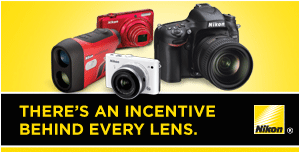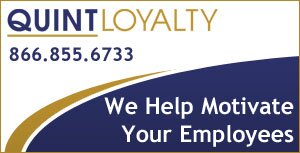Walking the Talk on Cultivating a Culture of Engagement
ESM sits down with Meagan Gregorczyk, Director of Talent Management at CA Technologies, for an in-depth discussion about the connections between people, performance and profits
By Amy Wilschke
As organizations move toward globalization and the old-school notion of the physical workplace falls to the wayside, it’s becoming imperative for companies to re-evaluate their talent management processes and take a closer look at what keeps their employees engaged and consistently driven toward growing the business as a whole. What’s good for the goose isn’t necessarily good for the gander, especially when the gander is spread out across several different ponds.
Meagan Gregorczyk, PMP, is the Director of Talent Management for CA Technologies, a 30-year-old international software company headquartered in Islandia, NY. In her nine years with the company, Gregorczyk has worked in sales, marketing, operations, corporate education functions and, as of last year, human resources. Gregorczyk was a speaker at the recent Marcus Evans Talent Management and Leadership Development Conference in Chicago, where she kindly sat down with ESM to answer a few questions…
Q: How are talent management and retention linked at CA Technologies?
A: One of the most important things that we’re focused on right now is attracting and retaining the right talent. This fit is critical to our success in managing and retaining employees that will drive the business forward. For the employees that are already here, we have to be really responsive and strategic about the ways that we structure jobs and processes to meet their needs. Listening is something we do a whole lot of. We listen to them talk about the engagement process and what they’re experiencing. The more we do that, of course, the better retention gets.
We understand that engaged employees are happy employees, and happy employees tend to stay put. It’s interesting because retention has held fairly steady for a good period of time. In terms of industry standards, our retention rates are relatively strong; however, that doesn’t mean that we aren’t always looking for ways to enhance the employee experience to improve them further.
Q: Does your company have a formal, corporate definition of talent management?
A: Well, there’s the “right” answer, and then there’s the “real” answer: It’s something that’s always a work in progress. Talent and employee engagement are at the forefront of what we’re trying to do as a company right now. At CA Technologies, we really do view talent management as an imperative business process to attract, develop, retain and utilize our people to meet a set of extremely intricate business needs.
Integrated talent management means integrating people and processes, but it also requires that we be very thoughtful about the ways that we integrate those things with the business. The changing marketplace means that we have to get smarter as practitioners about the ways that we do that, and our definition of talent management has to be flexible enough in scope to accommodate and support the business changes and demands at hand.
Q: Do you have a formal, corporate definition of engagement?
A: Creating great employee engagement isn’t just the job of HR – it’s the business of every part of the organization. We all know that great employees don’t work just for a paycheck, or for their next bonus, or for their next promotion. They want to belong to something, to believe in something and to be a part of something meaningful. For us, engagement is the emotional connection and commitment employees have to our company and our goals. Our Community Affairs team works across the organization to create rich employee experiences through community volunteerism activities, matching gifts programs, events related to the advancement of women in IT and health and community initiatives. These types of opportunities are invaluable in giving employees a chance to connect with the organization, the community and each other in very powerful ways.
Q: Have there been any recent changes to your talent management program or processes?
A: Like most companies, we’re always striving toward improving our talent management and retention processes. One of the things that we’re most focused on now is ensuring that our talent processes meet the needs of an increased globalization of our workforce. That has driven a renewed need to look at things differently across the board – from things like recruiting and enablement to leadership development and succession planning. We find that using quarterly talent scorecards to provide a clear “line of sight” to our senior leaders around these things is invaluable in driving results.
We also set forth on a new culture initiative last year, in which all 14,000 employees took part in defining a new set of corporate core values. While our new core values haven’t changed our talent management processes, they have prompted us to look at them to ensure alignment to those values and to ensure that everything we’re doing reflects and supports them appropriately.
Q: What part do rewards and recognition play in your company’s talent management strategy?
A: We have a very cool rewards and recognition program. Right now, for example, we have a program that’s kind of tied into the Olympics theme of teamwork, where teams of people can go in and recognize other teams for coming together and acting as one. We do a lot to try and tie in practices that support talent management and employee engagement with rewards programs and work-life balance, with things like flex time and telecommuting. At this point almost 20% of our employee base is a part of our work-from-home or teleworker community, and we spend a good amount of effort to ensure that we’re creating programs that support their engagement.
There are such diverse generations of people in the workplace right now, and they value different types of rewards and recognition in different facets. You have to be really tuned in to the ways that you’re rewarding the different generations. Somebody who’s in a spot where they may retire within a few years is obviously going to value different things than a Millennial will, and being thoughtful about the things that you do to reward different generations in ways that truly matter to them is imperative.
We tend to celebrate a lot here because fun is a vital part of our environment. Things like career service celebrations, department recognition boards and special recognition for a job well done through an “Above and Beyond” awards system have become part and parcel of our culture. We also provide managers with recognition tools that enable them to reinforce outstanding work results and to celebrate achievements of employees. An employee’s relationship with their manager really is so vitally important to the engagement process.
Q: What are some of the best resources you’ve found to educate yourself about talent management and/or engagement?
A: I find that professional conferences and networking events are one of the best ways for us to connect as a talent community and to learn from each other – something that’s vitally important. Analyst groups like CLC, I4CP and Bersin and Associates are fabulous resources as well.
In terms of books, I really like Building a Magnetic Culture by Kevin Sheridan. His ideas around building and maintaining employees’ engagement levels are clearly stated and easy to translate to the real world. I actually also really enjoyed the entertainingly titled Dancing with the Talent Stars: 25 Moves That Matter Now by Kevin Wilde. It has very candid perspectives on what it takes to make it as a practitioner in the talent industry. Let’s face it, this work isn’t for the faint at heart, and change is difficult to influence day in and day out. Kevin takes a refreshing approach with the topic and it’s a short, engaging read.
Another book I like is How Full is Your Bucket by Tom Rath and Donald O. Clifton. It’s about really figuring out how to have a whole life, and it’s something we’ve been talking a lot about in my company lately. This issue of being busy versus being productive is extremely thought-provoking. I think that if all of us really took a look at the things that we do that provide value, we’d ask ourselves, “Am I doing this to be busy because it’s what I think I’m supposed to be doing, or is it truly providing value?” If we collect and do away with the things that aren’t providing value, how much more full could our lives really be?
I have a Project Management certification, and my nerdy side comes out every once in a while and I have to go back to my project management material and books for inspiration in managing the “goat rodeo” that we all face on a daily basis. As someone who is in the business of people, it’s interesting to see how you can make those more process-oriented tools work to your benefit.
I also have a graduate degree in Human Resources Development, and I read all the stuff that you’re supposed to read as a practitioner in the field. But then the real world takes hold and you start figuring out that all it’s really about is creating meaningful connections to, for and with other people. That’s the foundation of what we do – creating trust through really great, strong communication practices.
Q: Can you briefly describe your first encounter with the term “engagement”?
A: It’s always been there, especially with those in our field, but it really started to gain traction about four or five years ago, and that probably ties into this business of the recession. As a community of people who focus on building people, we really try to think about the things that give employees a great experience in the workplace. It’s about creating meaning and connection. These days we’re starting to hear senior leaders talking about it, but they’re not necessarily walking the talk quite yet. They know it’s the right thing to do in most cases, but they’re still struggling to make the connection between business activity and engagement. In many ways they’re still separate, and I think that’s the big challenge that we have ahead of us.
Q: So do you think that engagement is a real business discipline or just a fad?
A: Engagement is the business of the company. It’s not just the business of HR. But before engagement can truly take hold, we’re going to have to come to a point where it stops being thought of as a fad or buzzword. I think engagement is still in the “nice to have” category – it’s often not seen as necessary for driving business results.
What we know, however, is that organizations that understand the business case for talent management successfully link talent management and organizational strategy, and they reap the benefits in increased performance.
Helping leaders understand those connections and understand that employee engagement drives business results is really important. It’s not just important for the livelihood of all of us in the industry, it’s important for the future of business.
Subscription Center
Subscribe to Engagement Strategies Magazine
Update Your Subscriptions





.jpg)

Comments
Show: Newest | Oldest
Post a Comment